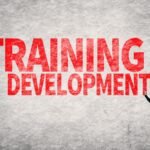Unlocking Success: Effective Recruitment and Selection Strategies
In today’s competitive business landscape, organizations recognize that their success hinges on the quality of their workforce. To build a high-performing team, it is crucial to implement effective recruitment and selection strategies. This blog will delve into the key aspects of recruitment and selection and explore strategies that can help organizations attract, identify, and hire the right talent. Define Job Requirements: Before initiating the recruitment process, it is essential to clearly define the job requirements. This involves identifying the necessary skills, qualifications, and experience needed for the position.
A well-crafted job description serves as a foundation for effective recruitment and ensures that candidates are aligned with the organization’s needs. Develop an Employer Brand: A strong employer brand helps organizations stand out in the job market and attracts top talent. Communicate the company’s mission, values, and unique selling points to potential candidates through various channels such as the company website, social media, and employee testimonials.
This creates a positive perception and enhances the organization’s reputation as an employer of choice. Utilize Multiple Sourcing Channels: To cast a wider net and reach diverse talent pools, organizations should leverage multiple sourcing channels. This includes job boards, social media platforms, professional networks, employee referrals, and partnerships with educational institutions. Expanding the reach maximizes the chances of attracting qualified candidates from various backgrounds.
Implement Effective Screening Methods: Screening candidates efficiently is critical to identify the most suitable individuals. Incorporate different screening methods such as resume reviews, phone interviews, and pre-employment assessments to assess candidates’ qualifications, skills, and cultural fit. This helps streamline the selection process and ensures that only qualified candidates move forward. Conduct Structured Interviews: Interviews are pivotal in evaluating candidates’ suitability for the role and the organization.
Implement structured interviews that follow a standardized set of questions for all candidates. This enables fair and consistent evaluation, minimizing bias and subjectivity. Including behavioral and situational questions can provide valuable insights into a candidate’s past experiences and problem-solving abilities. Embrace Diversity and Inclusion: Building a diverse and inclusive workforce is not just a moral imperative but also a strategic advantage.
Encourage diversity in recruitment efforts and ensure equal opportunities for all candidates. Establish inclusive hiring practices that focus on skills and qualifications, reducing unconscious bias in decision-making. A diverse workforce fosters creativity, innovation, and different perspectives. Promote Internal Mobility: Don’t overlook the talent within your organization. Internal mobility programs provide growth opportunities for existing employees and improve retention.
By promoting from within, organizations can retain institutional knowledge, boost employee morale, and demonstrate a commitment to employee development. Continuous Candidate Relationship Management: Even if a candidate isn’t selected for a specific role, maintaining a positive relationship is crucial. Implement candidate relationship management strategies to build a talent pipeline for future openings. Keep candidates informed about their application status, provide feedback, and engage them through personalized communication.
This fosters goodwill and increases the likelihood of attracting top talent in the future. Conclusion: Effective recruitment and selection strategies are essential for organizations to identify and hire the right talent, contributing to their long-term success. By defining job requirements, building an employer brand, leveraging multiple sourcing channels, implementing structured interviews, embracing diversity, and nurturing relationships with candidates, organizations can enhance their recruitment efforts and secure top talent. Investing time and resources into these strategies is a worthwhile endeavor that pays dividends in the form of a talented workforce that drives organizational growth and success.


































